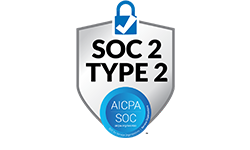
Post the discovery of the helical structure of DNA, there was an outburst of research and development to know more about it and its application in the field of healthcare. In the year 1960, the scientists ventured into the research of introducing DNA sequence into patient’s cells to find a cure for genetic disorders. This has led to unprecedented growth in the field of genomics.
Finding cure for cancer
Cancer is the most dreaded and relentless disease. Though, as per the latest statistics, the survival chances of cancer patients have increased dramatically over the years, the war is far from over. This disease is linked to genetic defects. The introduction of genes specifically to alter the defective gene has fueled various development to find a cure for cancer. It is speculated that cell and gene therapy (CGT) can be used to cure cancer and also other serious illnesses like cystic fibrosis, heart diseases, hemophilia, diabetics, AIDS to name a few.
Presently various clinical trials are conducted in the United States. Once it gets approved, cell and gene therapy can be a life-changing treatment option for people afflicted with cancer and other serious illnesses.
More about cell and gene therapy

Cell therapy is where viable cells are implanted or injected into a patient. This helps to increase the medicinal effect. This therapy is used widely in treating a patient afflicted with Cancer. In the 19th century, it experimented with animals, however, further studies and research showed that cell therapy can be used in humans to avoid body rejecting transplanted organs. Now it is used to treat autoimmune disease, urinary problems, repair spinal cord injuries, and improve the weakened immune system.
Gene therapy focuses on the genetic modification of the cell. The defective genetic cell is repaired as part of the treatment. It aims to fix the genetic problem at its core by modifying the protein of the mutated cell.
The goal of both the therapy – cell and gene – are the same but they are still vastly different. Cell therapy uses healthy cells to cure the ailment and gene therapy changes the gene structure by duplicating the structure of the healthy cell.
Both the therapies are costly and difficult to implement. Researchers have been working on gene therapy for 40 years. In the year 2017, U.S. Food and Drug Administration had approved the first gene therapy treatment – Kymriah. We do have a long way to go to make cell and gene therapy available for people at large.
Cell and gene therapy soon a reality?
Personalized medicine to cure cancer
After years of research, we have a chance to beat the relentless Cancer. Due to genetics research, we know how the disease develops and affects the patient. Cell and gene therapy uses the body’s own T-cells to beat the infected cancerous cells. The treatment thus received will be personalized to patients to cure cancer.
Life Science Industry keen on expansion
Knowing the potential in cell and gene therapy many companies are entering the markets. With this significant interest shown by big companies, cell and gene therapy may get a major boost. For example, a company like Novartis is all set to expand Kymriah treatment.
Regulatory Support
Regulatory bodies are now open and collaborative to recognize and acknowledge the potential of cell and gene therapy treatments. They are gearing up to set up a standardized system to monitor the treatments.
Limitations
The stage of advancement and the support it is gathering across the world is encouraging. But the real challenge is to scale it up to its real potential. Since it uses the patient’s cell for treatment – it is very specific to that patient. It becomes difficult to standardize the process. Many more innovative manufacturing technologies will need to be employed to scale it up. The cost-effectiveness needs to be worked out. It would need to be a collaborative effort from all the stakeholders. The side effects of such treatments need to be analyzed.
Cell and Gene therapy is definitely the best treatment for curing cancer and it has the potential to play a major role in curing other diseases as well. Now how soon the ambition of making it a reality happens that only time will tell.
Any advancement in the field of medical science is made possible with research through data collection, clinical trials, and constant monitoring of how the product or service actually performs. The life Science industry is led by quality management initiatives that are driven by data. Real-World Data and Real-World evidence are the backbones of the healthcare system. The large unstructured data processing and analysis is the key to the success of the Pharma and Life Science industry. Aventior provides the complete technical know-how and support to Life science, Biotech, and Pharma companies to build their complete digital ecosystem. To know more about our services and the solutions we provide, kindly write to us info@aventior.com.
Tell Us for more about your requirements here



 +1 (617) 221-5900
+1 (617) 221-5900
 Follow Us
Follow Us
